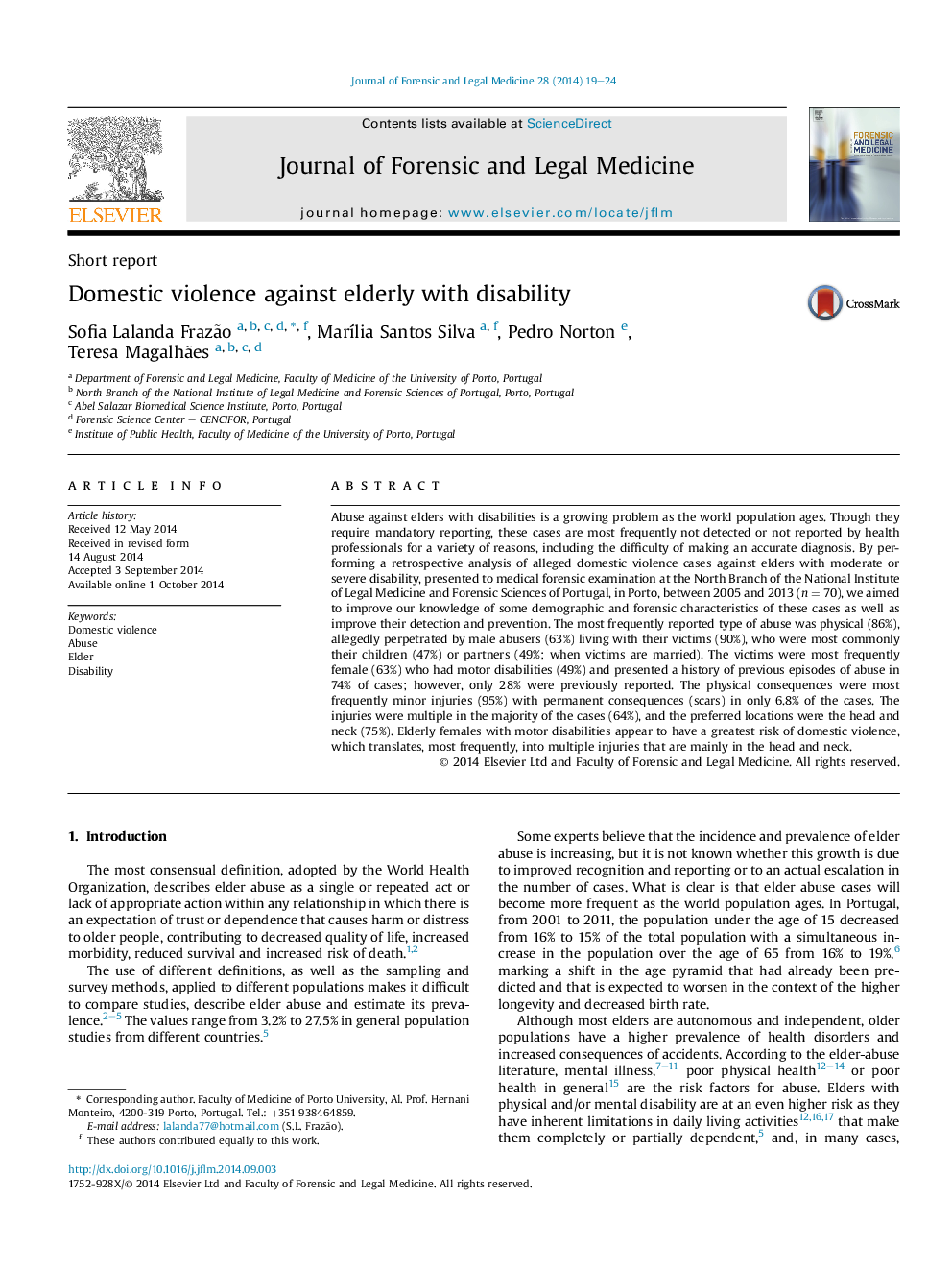| Article ID | Journal | Published Year | Pages | File Type |
|---|---|---|---|---|
| 101844 | Journal of Forensic and Legal Medicine | 2014 | 6 Pages |
•We analysed domestic violence cases against elders with physical/mental disabilities.•Physical abuse with head/neck injuries is the most frequently reported type.•Abusers are predominantly male and living with the victims, which are mainly female.•Most victims have motor disability and previous history of abuse by the same abuser.•The number of victims with disability observed among all cases may be underestimated.
Abuse against elders with disabilities is a growing problem as the world population ages. Though they require mandatory reporting, these cases are most frequently not detected or not reported by health professionals for a variety of reasons, including the difficulty of making an accurate diagnosis. By performing a retrospective analysis of alleged domestic violence cases against elders with moderate or severe disability, presented to medical forensic examination at the North Branch of the National Institute of Legal Medicine and Forensic Sciences of Portugal, in Porto, between 2005 and 2013 (n = 70), we aimed to improve our knowledge of some demographic and forensic characteristics of these cases as well as improve their detection and prevention. The most frequently reported type of abuse was physical (86%), allegedly perpetrated by male abusers (63%) living with their victims (90%), who were most commonly their children (47%) or partners (49%; when victims are married). The victims were most frequently female (63%) who had motor disabilities (49%) and presented a history of previous episodes of abuse in 74% of cases; however, only 28% were previously reported. The physical consequences were most frequently minor injuries (95%) with permanent consequences (scars) in only 6.8% of the cases. The injuries were multiple in the majority of the cases (64%), and the preferred locations were the head and neck (75%). Elderly females with motor disabilities appear to have a greatest risk of domestic violence, which translates, most frequently, into multiple injuries that are mainly in the head and neck.
